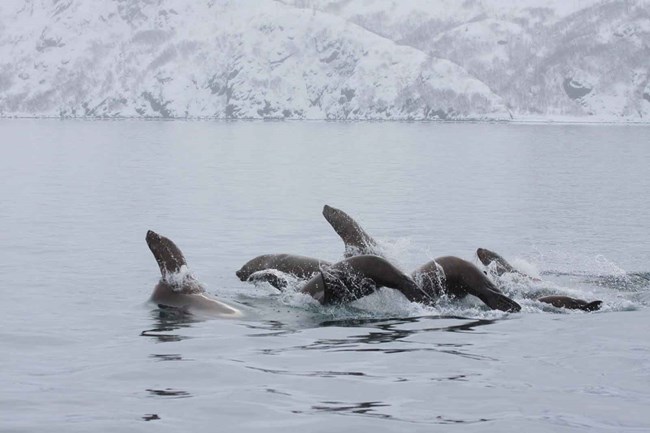
Marine mammals and seabirds in Glacier Bay National Park and Preserve are among the most emblematic and readily observable wildlife in the park. A large proportion of these species is also of particular management concern, due either to conservation status, iconic, or charismatic characteristics. Many visitors to Glacier Bay National Park and Preserve both aspire and expect to observe a variety of seabirds, cetaceans, and pinnipeds. Top trophic-level predators (including marine mammals and seabirds) can serve as an index of ecosystem health because they assimilate and reflect the dynamics of populations at lower trophic-levels.
Marine predator surveys are conducted along the outer coast of Glacier Bay National Park and Preserve and Wrangell-St. Elias National Park and Preserve with concurrent physical and biological oceanographic sampling.
Contact: Jamie Womble
Learn more
Last updated: May 20, 2025
